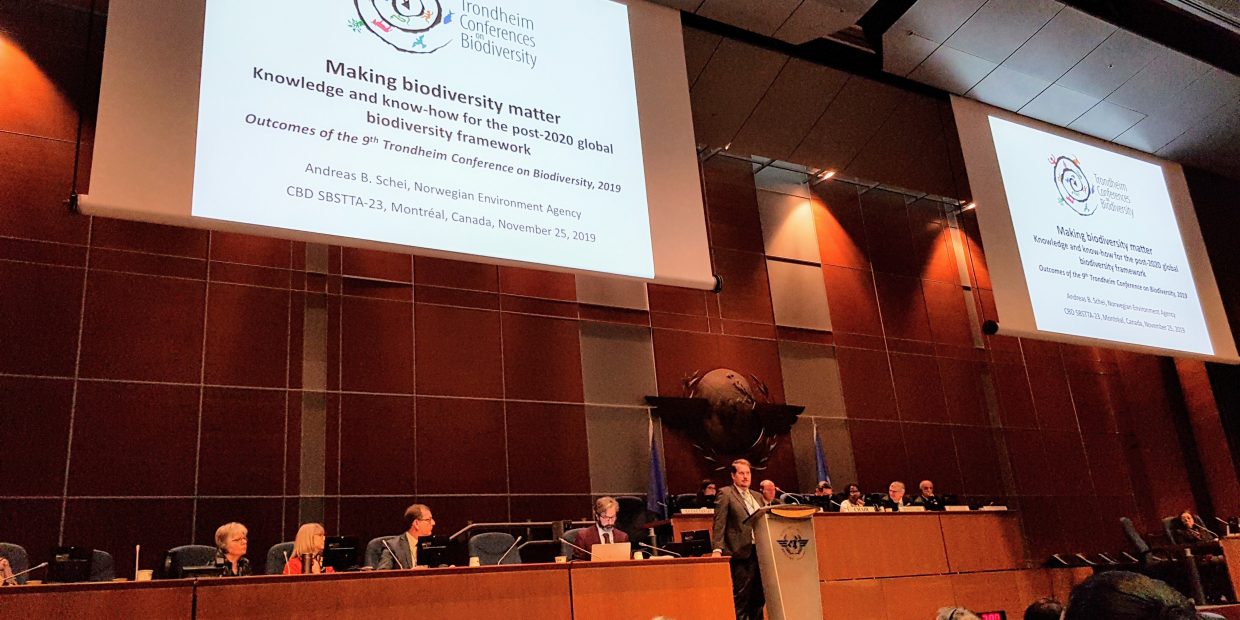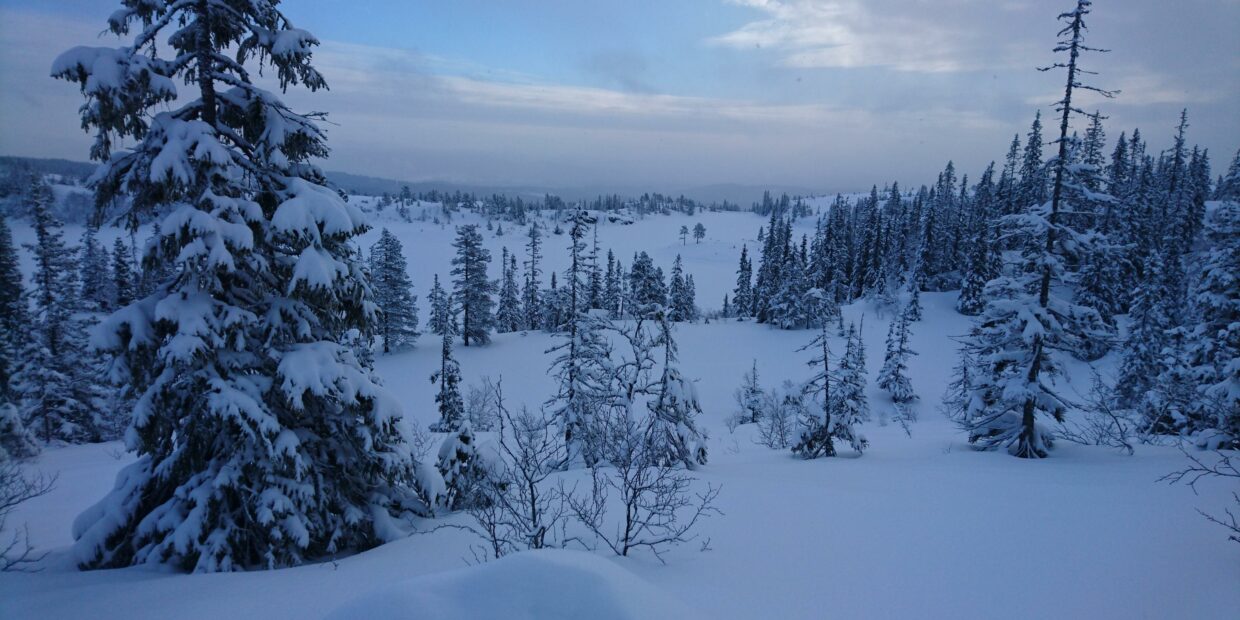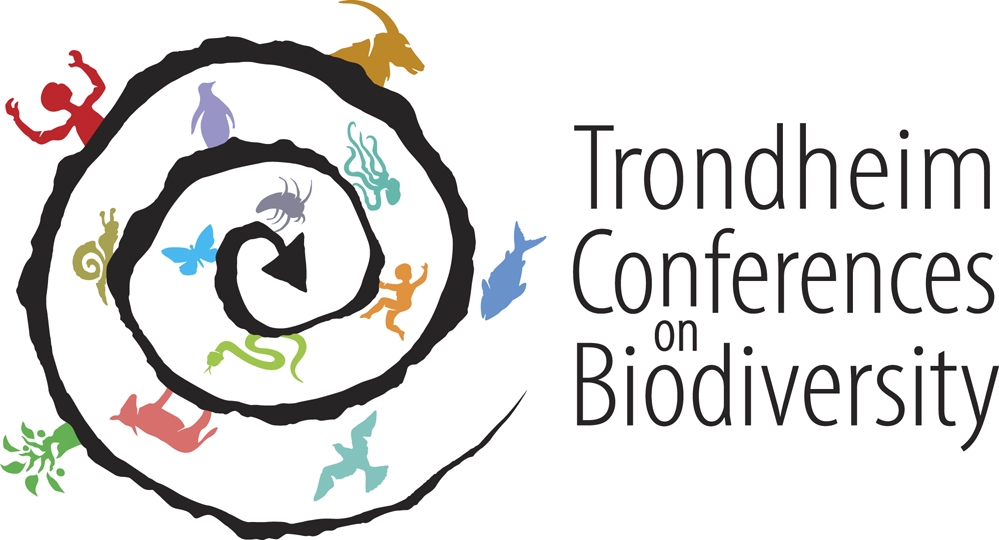Co-Chairs' Report from the Ninth Trondheim Conference
The primary purpose of the Trondheim Conference is the conversations amongst participants, supported by the many inputs made. The intention was that the exchanges at this conference would provide participants, and in particular negotiators, with increased understanding of a range of issues relevant to the upcoming negotiations on the post-2020 global biodiversity framework. The Conference Co-chairs have, with invaluable assistance from the Chief Rapporteur, produced a report which seeks to reflect the main inputs to and outcomes from the ninth Trondheim conference. However, the report can in no way capture all of the conversations, and the many inputs made, and it is not intended to do so.
- The ninth Trondheim Conference on Biodiversity 2019 - Report of the Co-Chairs (Original version of the full report in English)
- (Translated Arabic version of the full report) مؤتمر تروندهايم التاسع بشأن التنوُّع البيولوجي - تقرير الرئيسين المتشاركين
- 特隆赫姆第九届生物多样性大会 2019 - 联合主席报告 (Translated Chinese version of the full report)
- Neuvième conférence de Trondheim 2019 - Rapport des co-présidents (Translated French version of the full report)
- Novena Conferencia de Trondheim 2019 - Informe de los copresidentes (Translated Spanish version of the full report)
In October 2019 we secured funding to make the full conference report available also in the other five UN languages. Translated versions of the full report in Arabic, Chinese, French and Spanish are available in the links above. The translated version of the full report in Russian has not been proofread yet, but a draft version is available below.
- Девятая Тронхеймская конференция по биоразнообразию 2019 - Доклад сопредседателей (DRAFT Translated Russian version of the full report)
Based on the full report we have prepared (in English only) a summary and key points from the report, i.e. blue text and bold first sentence/phrases in the full report, and a summary, with blue text only from the full report.
Powerpoint presentation of conference outputs
Based on the co-chairs' report, we have prepared a Powerpoint presentation with a set of slides that participants and others may use as a basis for communicating outputs from the conference. There are no restrictions on use, but please note that all photos in the slides must be credited to IISD/ENB | Mike Muzurakis.
- Powerpoint presentation of conference outputs (in Powerpoint)
- Powerpoint presentation of conference outputs (in pdf)

Communication of the conference report
The conference report was made available to participants at the first meeting of the Open-ended Working Group on the Post-2020 Global Biodiversity Framework (OEWG-1), which was held in Nairobi August 27-30, 2019. The report was presented at the meeting in an information session on August 28, by Andreas B. Schei of the Norwegian Environment Agency (Norwegian SBSTTA NFP).
- Norwegian presentation of the conference report at OEWG-1 (in Powerpoint)
The conference report was made available as an information document to the twenty-third meeting of the Subsidiary Body on Scientific, Technical and Technological Advice (SBSTTA-23), which was held in Montréal on November 25-29, 2019. The report was presented on November 25 in the plenary session for agenda item 3 on informing the scientific and technical evidence base for the post-2020 global biodiversity framework, by Andreas B. Schei of the Norwegian Environment Agency (Norwegian SBSTTA NFP).
The conference report was also made available for the second meeting of the Open-ended Working Group (OEWG-2), which was held in Rome (FAO) on February 24-28, 2020. OEWG-2 looked at scope and content of the post-2020 global biodiversity framework.
Process behind the Co-chairs' report
A first draft co-chairs report from the conference was distributed to participants on the morning of July 5. This draft was presented by the chief rapporteur for the conference, Jerry Harrison, in session 11 on July 5. Following this participants were invited to comment on the content of the report. A more complete draft of the report was sent to all participants on July 18 for review, with a deadline for comments by July 26. Most of the comments received have been accomodated in the final report. The conference co-chairs, Nina Vik and Finn Katerås, stand responsible for the content in the report.
Please note that the report available above (published on August 14 2019) includes some minor changes compared to the version of the report that was sent to all participants (and published on this home page) on August 1. These changes accommodate valuable comments received by July 26 which we had inadvertently omitted to address in the version distributed on August 1. The revisions do not affect the main content or direction of the report.

